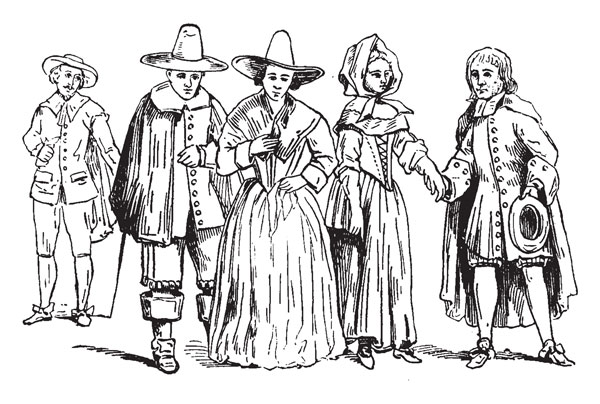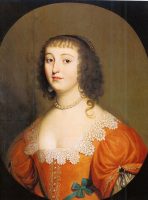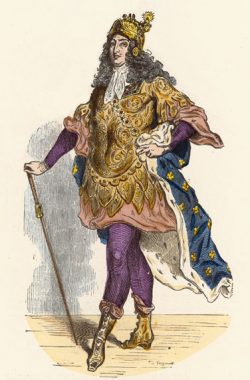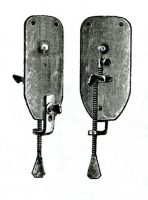1600 CE This period was characterized by religious wars, expanding trade of enslaved peoples as well as the middle of the Renaissance Period which included an explosion of art, theatre, philosophy, and cultural conversations. It was also the start of the scientific revolution. Doctors were usually apprenticed, self-taught, and most likely also the town priest or pastor. It was widely believed that humans descended from one man or one couple through a divine act. There was increased scrutiny over the differences amongst black people and between black women and white women. Men wrote copious treatises and books dissecting women’s breasts, bellies, hips, and facial features.
1600 Shakespeare’s racial and sexist biases against black people and Jewish people were on full display in his numerous popular plays. For example, Hermia from A Midsummer Night’s Dream was described as a “vixen,” who, even as a youth, could lure men with her sexual charms, although she was simultaneously a grotesque, “tawny tartar,” and a “low” dwarf. Helena, Lysander’s new lover, was described as the idealized European beauty, tall, white and slim, like a “painted maypole.” At this time, white women and girls were painting their faces and arms with white lead paint as a way to further distance their femininity from that of black women.
1607 The first American colony settled. Similar to the Spanish settlers in the 1400s, Colonials believed that physical differences between races existed because of different ways of eating.
1620s A small number of doctors began noticing increases in men’s weight and rates of gout increasing. Gout was known as the King’s disease.
1630s Religious wars were in full swing. Queen Elizabeth I had tried to find a middle ground, a way of incorporating both Catholicism and Protestant faiths, but a group of Protestants, the Puritans, opposed this and wanted to purify their religion as a way to further distance themselves from Catholics. They were a small and radical sect who were quick to judge and found ways of elevating themselves over Catholics. One of their primary messages was that the rising wealthy were taking in too much pleasure in food and drink.
1630 Puritans settled in Boston and Maryland.
1634 Galileo disproved that heavier bodies fall faster than lighter bodies.
1647 Descartes wrote a letter to King James I granddaughter, Princess Elisabeth of Bohemia, advising her to consume “a good diet, taking only food and drink that refreshes the blood and purges without any effort,” to preserve her health. This was in response to her telling him in a prior letter that she had been free of illness and abscesses.
1650 King Louis XIV’s reign ushered in new culinary flavors and what we now call classic French cuisine. He popularized serving dishes separately on silver and iron platters and with silver utensils. Doctors began debating the health impacts of coffee, tea, and chocolates. In France, coffee houses, inns, and taverns became increasingly popular and the nobility frequented them. Wine production increased, as well. Eventually, French serving styles and recipes spread throughout Europe and became one of the ways the aristocracy distanced itself from the middle class. It is worth noting that King Louis XIV established himself as supreme ruler above religion, which may be why he felt more free to express indulgences around food and beverages. Since food was allowed to be pleasurable, his subjects were able to eat around tables in rooms devoted exclusively to dining. Before this, people mostly ate in their rooms or in halls. Many cookbooks were published at this time.
1655 Isaac de La Peyrere, a Calvinist, published a heretical treatise Prae-Adamitae or ‘Men Before Adam.’ For the first time, there was published material stating that humans existed before Adam and Eve, and the Catholic Bible was wrong for not including historical “pagan” accounts from Egyptians, Chinese, Native Americans, Greeks, and Babylonians. The Church dismissed this by saying the sacred texts were the truth. This essay birthed the polygenism vs monogenism debate. Centuries of scientific discoveries have confirmed La Peyrere’s polygenism theories to be factual and true. Still, many people who grow up within a church system are taught that humankind came from Adam and Eve.
1660 1,200 barrels of sugar were imported into Europe. Sugar was primarily accessed by the wealthy and nobility. Tea and coffee houses were flourishing, and new types of alcohol were being made.
1675 By this time, white people had believed for over 200 years that black people were large, low, foul, lazy, dimwitted, and oversexual. The food they ate made them look the way they did, and because they came from a land where food was easy to access, they had time to be carefree. There were also hundreds of years of religious doctrines punishing people if they weren’t austere enough and telling them that to be holy, they must dress, eat, and act in certain ways. Enjoying pleasurable things, like good food and sex, weakened spiritual connection to God and overall intelligence. Not only was food for bodily survival, but it was for spirituality, as well, and had a significant impact on morality. These ideas clashed with the social environment in which tea houses, coffee houses, breweries, and culinary delicacies were emerging all over Europe. These establishments fueled increased sugar consumption, which became affordable due to large sugar imports from colonial sugar plantations. So, there was more, better tasting food available, but a persistent religious message that indulgence was sin and enjoying food led to spiritual corruption. Perhaps this contradiction is the origin of the phrase Catholic guilt.
1676 The Bacon rebellion occurred and fostered the development of racial categories in the colonies. The rebellion is generally considered to be the first armed insurgency by colonists against the English government. It was composed of people from both African and European heritages, many of whom were enslaved. At the time, “African and European laborers were treated largely the same.” They could intermarry and if able to attain freedom, both could “exercise voting rights in the colonial legislature, accumulate wealth, and hire European laborers.” After the ultimately unsuccessful Bacon rebellion, wealthy landowners became alarmed that Black and white servants had joined forces. “The rights of African people were reduced until African descent was synonymous with slavery. On the other hand, a new category appeared: white. For the first time, people who might have been referred to as Christian, or English, or Scottish, or Swedish were all lumped together under this new name. Even the poorest white person now had greater rights than any enslaved African.” (Lee, 2021).
1676 The term microscope had been introduced 25 years prior, but now Antonie van Leeuwenhoek debuted the simple microscope, which was the first to see living cells in blood, yeast, and insects. He was also the first to describe bacteria. It would be a long time before the people would learn the role of bacteria in spreading diseases.
1683 Sydenham’s A Treatise of the Gout and Dropsy correlated the rising gout epidemic in men to overeating and over consumption of alcohol. The treatment was drinking brown sugar and marshmallow syrup.
1684 Despite preachings calling for austerity, white men continued to meet in salons and other beverage establishments. They freely discussed and dissected the similarities and differences between black people’s bodies and white people’s bodies, and they made assumptions about what those features meant. They were attempting to figure out how to tell who was worth more money and were better at certain tasks by critiquing the level of melanin as well as other physical attributes. Of course, black women got the brunt of this dissection, and although they were considered lowly, they were still at risk of being desired.
In 1684, Francois Bernier, a French doctor, created racial categories, and particularly focused on the difference among the women of each race. Races were categorized by superiority: 1) White: anyone light skinned, including some lighter skinned Egyptians and East Indians who were only dark if they were tanned from sun exposure; 2) Black: everyone in Africa except the Mediterranean coast, described as having hair made of a species of wool, teeth whiter than ivory and red coral lips; 3) Asian: described as white but with broad shoulders, flat faces, squab noses, deep set pigs eyes and three hairs of beard; 4) Lapps: indigenous peoples of northern Scandinavia described as little stunted creatures with large shoulders, short necks and elongated faces, who were ugly, looked like bears, and were wretched animals. These descriptions became part of the first encyclopedia of modern times.
1685 France’s King Louis XIV revoked religious freedom and created the Edict of Founainebleau, which ordered the destruction of Protestant churches, closure of Protestant schools, and expulsion of Protestant clergy. An estimated 800,000 people fled to neighboring countries and the American colonies as a result.
1686 Wilhem ten Rhyne, a Dutch doctor, said that the primary difference between white women and black women was that black women had an elongated labia which he attributed to a certain kind of black people called Hottentot, who were really Khoikhoi peoples.
1688 The English Parliament overthrew Catholic King James II. His protestant daughter, Mary, and her Dutch husband, William of Orange, took his place. Called the Glorious Revolution, it increased Parliament’s power over the monarchy and became the beginning of a future democratic nation. This effort is rooted in the Magna Carta.
1692 Salem Witch Trials in Massachusetts. Later, it was believed that the first girls accused of witchcraft were not witches, but instead had suffered psychotic breakdowns due to the rigid, strict, and unachievable Protestant ideals of perfection and godliness.






